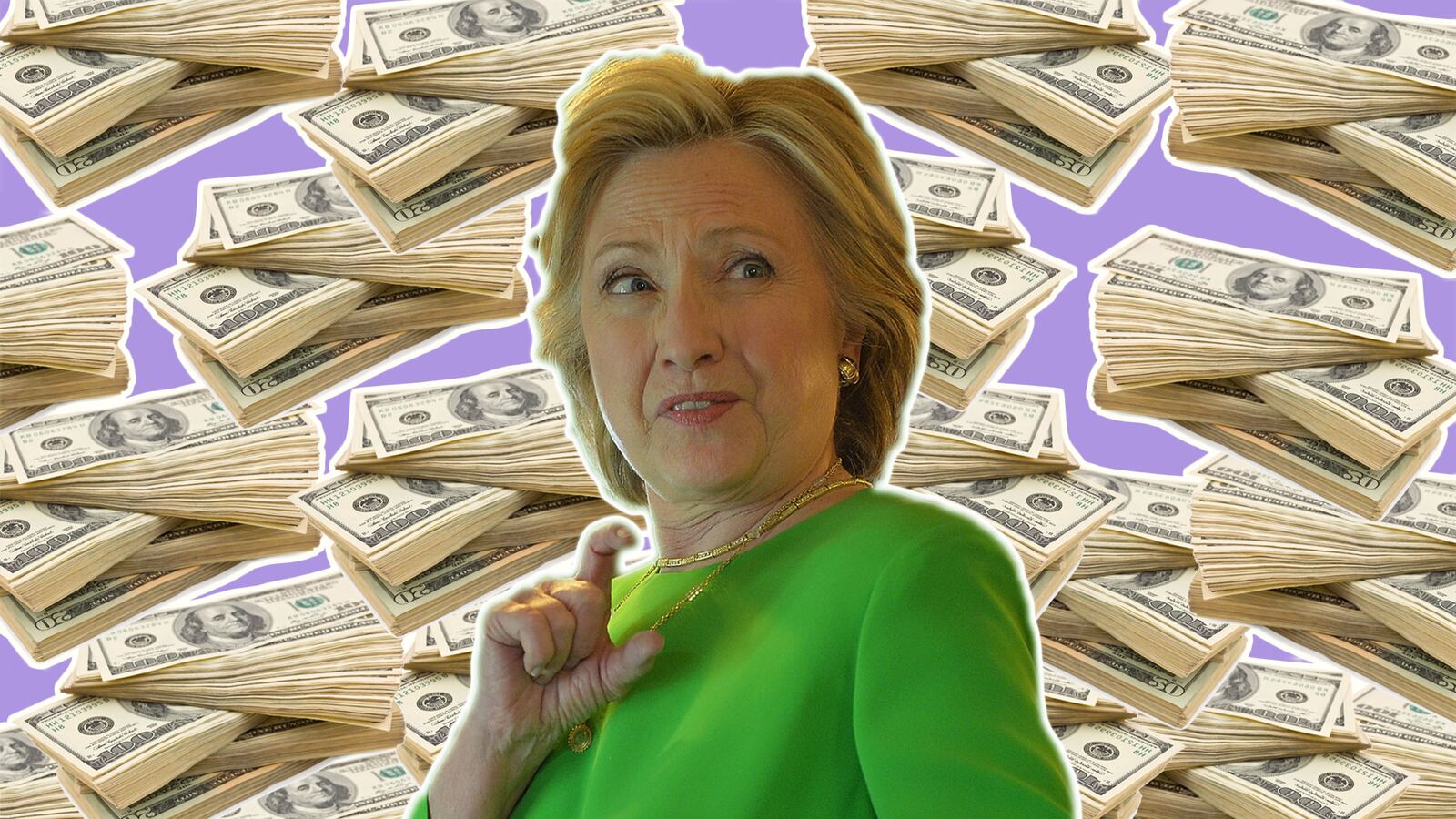During Hillary Clinton’s first campaign event in Iowa, the (finally) announced presidential candidate laid out the four main goals of her campaign, including the need to fix our “dysfunctional” political system and to get “unaccountable” money out of politics, even if it requires a constitutional amendment. And thus we have the latest chapter in Clinton’s unique and evolving relationship with Citizens United v. Federal Exchange Commission.
It may be easy to forget that the basis for the claim that led to the controversial Supreme Court decision in Citizens United v. FEC was a barely watchable film titled Hillary: The Movie, featuring prominent conservatives such as Dick Morris and Ann Coulter that was trying to damage Hillary Clinton on eve of the January 2008 Democratic presidential primaries. The film was produced by Citizens United, a D.C.-based conservative nonprofit organization.
The film was supposed to be distributed on cable television and video on demand, but the federal government blocked the airing of the film because it violated the McCain-Feingold Bipartisan Campaign Reform Act of 2002 that prohibited corporate and nonprofit funded advocacy ads that mentioned a candidate’s name within 30 days of a primary or caucus, or 60 days of a general election.
At the time, no one could have predicted that Clinton would finish third in the Iowa caucuses behind Barack Obama and John Edwards, so many conservatives thought that more than just attack ads would be needed to defeat her eventual rise to the presidency: Attack movies were the new and necessary medium.
Well, roughly a year into President Obama’s first term, the Supreme Court made its decision on Citizens United v. FEC, saying that certain provisions in the McCain-Feingold BCRA were unconstitutional, and this brought us into the modern era of a nearly unrestricted and confusing flow of cash into our electoral process through various 501(c)(4)s, PACs, and Super PACs.
Stephen Colbert may have actually best explained how this absurd network of constantly flowing political money works when he announced on his show that he was officially forming an exploratory committee for his potential candidacy for President of the United States of South Carolina, and therefore could no longer run his Super PAC. See the videos here and here.
And here we are today. Less than a week into Clinton’s second official presidential bid, she has already done two things that may completely alter Citizens United v. FEC and our electoral process. Her support of a constitutional amendment limiting or regulating campaign finance is a smart and popular decision among liberal voters, but her campaign’s announcement that it intends to raise a staggering $2.5 billion combined by the official campaign, Hillary for America, and various unaffiliated 501(c)(4)s, PACs, and Super PACs has completely altered our political landscape.
Roughly eight months before the Iowa caucuses, the fundraising machine that will drive or greatly influence Clinton’s campaign has set goals that dwarf those of Obama’s in 2012, and may scare away potential Democratic challengers.
The 2012 presidential election between President Obama and challenger Mitt Romney was the most expensive campaign in history, with each candidate’s election team and supporting groups raising $1.123 and $1.019 billion respectively. Clinton’s campaign intends to surpass that entire amount on its own, and she is allowed to do so because of a case brought to the Supreme Court because a conservative group wanted to have a larger impact on hopefully preventing her from winning the presidency in 2008. The irony is so rich.
Who knows if Clinton will be able to defeat the GOP and Republicans at the game they insisted on creating, but she most likely will at least be able to match them dollar-for-dollar in the general election.
The brilliance surrounding all of this is the fact that Clinton has steadfastly been against this sort of external influence into politics. She articulated her objections on her first day of campaigning in Iowa, and the main reason why campaign finance laws have changed in recent years was due to her objection to the previously unlawful attempt to disseminate a campaign attack video denouncing her in 2008.
Clearly, her campaign’s $2.5 billion fundraising estimate may point to the contrary, but the fundraising strategy of her campaign is actually based around small donations. Additionally, she has not named a finance chair for her campaign.
According to an internal campaign memo obtained by Politico, Hillary for America intends to have a “flat fundraising structure” and a “grassroots donor base and a merit-based finance organization.”
“The campaign will have the resources needed to compete,” continued the memo. “Initially fundraising will be a challenge—with lower limits and a smaller list than Obama in 2011.”
The campaign has moved away from her 2008 strategy of seeking mega-donors, but it also knows that it has the support of unaffiliated organizations such as Ready PAC, formerly Ready for Hillary, that desperately want a Hillary Clinton presidency. (According to FEC regulations, Ready for Hillary was forced to change its name once Clinton officially announced her candidacy.)
Arguably against the wishes of many Clinton supporters, two Clinton 2008 volunteers launched Ready for Hillary in 2013 and have raised more than $15 million for Clinton’s campaign and amassed a 4 million strong grassroots fundraising list that will be given to Hillary for America. Clinton’s campaign has already hired six Ready for Hillary staffers, including co-founder Adam Parkhomenko. These former staffers can no longer coordinate with remaining staffers, and Ready PAC intend to shut down completely in the coming days.
Essentially, Hillary Clinton’s campaign can develop only the fundraising strategy that the candidate supports, but the numerous other political groups that independently support her can fundraise how they see fit. Independent of each other they all collectively believe that these various efforts should enhance candidate Clinton’s chances of moving back into 1600 Pennsylvania Avenue.
All told these fundraising efforts may make her the unstoppable, inevitable candidate that she wanted to be in 2008. The big difference now is that she did not have Citizens United v. FEC to support her campaign.
If Hillary Clinton becomes the 45th president of the United States, the GOP may want to give themselves a nice pat on the back for all the hard work they indirectly have done to fund her presidential campaign.






